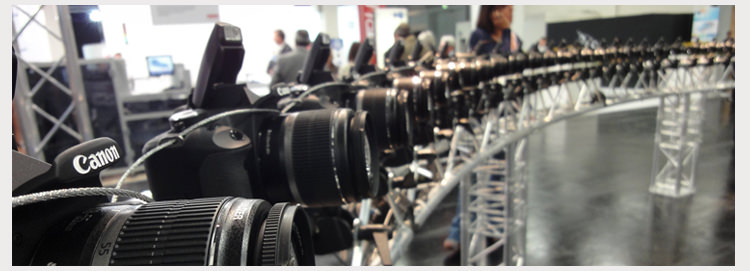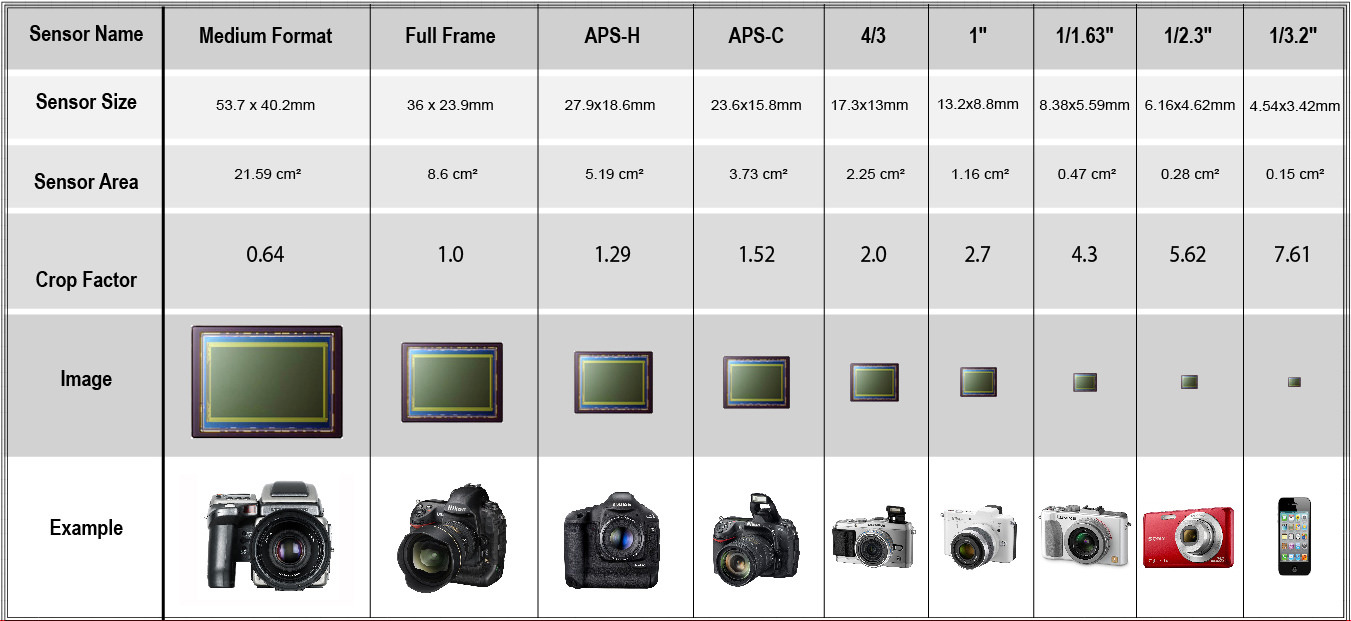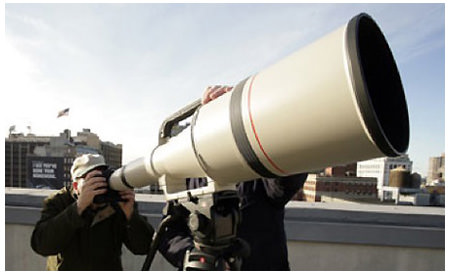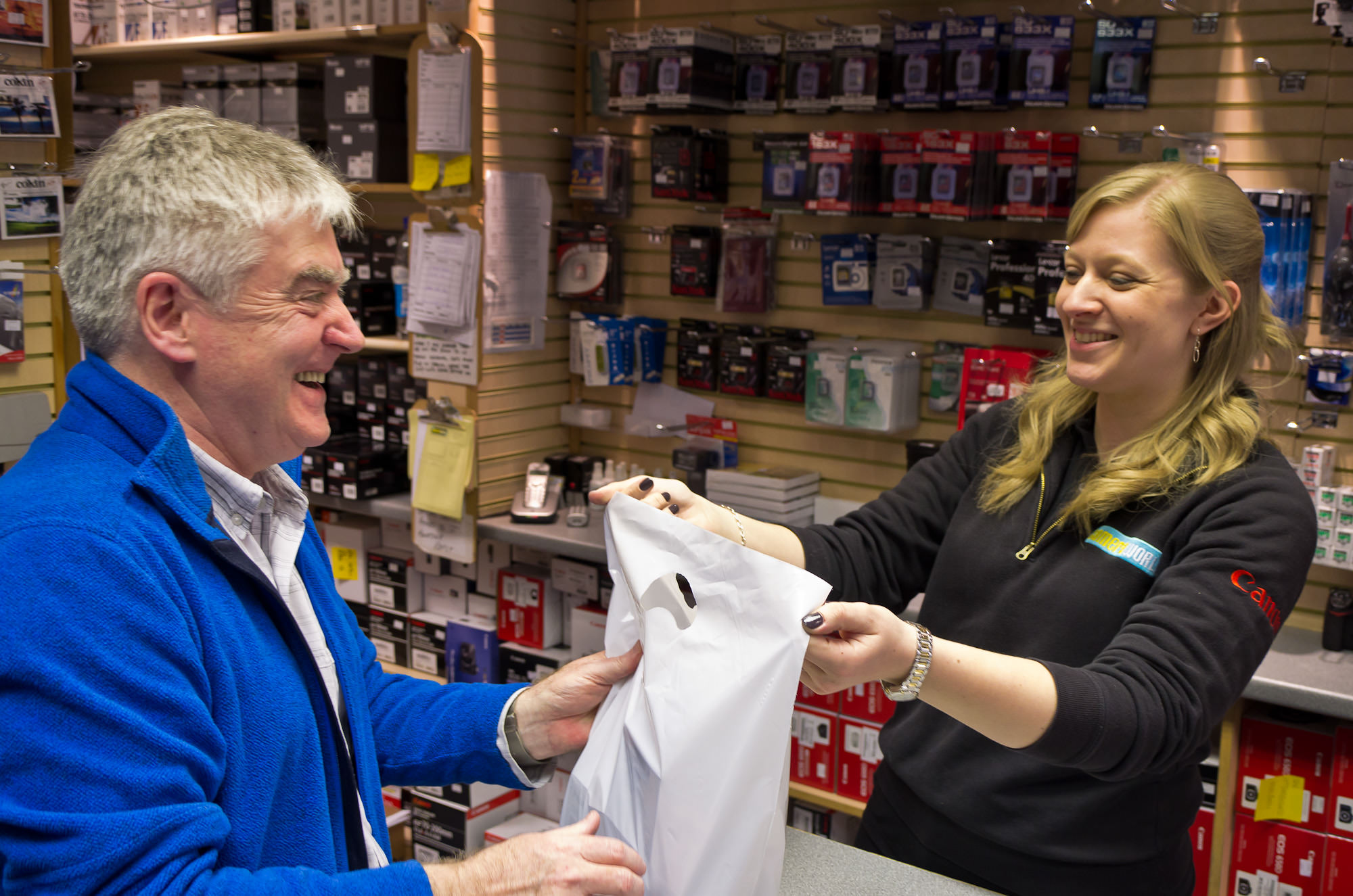Buying A Camera
When you begin to ask yourself: "What camera should I buy," it won't take you long to discover that any one time there are probably over 100 different models of camera to choose from.
Unlike when buying a car, you can't just go for your favourite colour, as cameras tend, in the main, to be either black or silver.
Like cars though, there are different shapes and models designed specifically for particular tasks, for fun days out and for the ‘serious' driver. To avoid some of the confusion we've broken down the main considerations so you can ask yourself all the important questions. Then, as if by magic, you'll come away with a camera that is going to make you very happy for a long time.
What camera to buy: Camera types
The first thing you'll notice is that cameras have a number of different basic shapes.
The smallest ones, that have a lens which doesn't come off the body, are called ‘compact' cameras.
Most compact cameras are designed to be used by people who ‘point-and-shoot' and who like the camera to do all the hard work.
Parachuting, diving, cycling or just something thats sturdy and strong for your holiday. Not a problem as we've got just the right models for you.
It's a common complaint: You want the photo quality and control of a DSLR but find you're leaving the camera at home because it's so large. The way to go is Advanced Compact. Whilst most of these are a little bit larger than your standard point and shoot, the cameras come with controls and settings that are normally found in a DSLR. Some have the option of RAW file capture, Full HD Movie, APS-C or even Full Frame sized sensors as well as optical/optional viewfinders.
Granted, you won't be able to change the lens (that becomes a compact system camera), or even have a massive zoom range, but there are accessories that might be able to get to increase that. However, with the higher quality of capture, you won't need to.
In the greater world of photography, this is a new style of camera that allows you to keep the quality expected from a DSLR, but in a much smaller body. You still have the flexibility of changing lenses and getting the right lenses for any given requirement, but reducing the size and weight of what you have take with you. This is booming part of our camera world that is making a huge change in how people look at thier systems.
The biggest and most complex cameras on the shelves are called DSLRs (digital single lens reflex). These cameras have a massive collection of lenses to choose from, as well as endless accessories.
While you can use them in point and shoot mode - and many people do - they are really designed for photographers who want to take control of every aspect of the way the picture is taken - it's brightness, how much is in focus, the way colours are displayed and the way movement is shown.
Although you don't have to carry more than one lens you have the opportunity to do so, and with the right kit there is no subject that you won't be able to face.
Somewhere between the DSLR and the compact camera is something called a ‘bridge' camera. These look a bit like a DSLR, but are smaller and their lens is not interchangeable. They tend to have extremely long lenses though, and can cover a wide range of situations. They are easy to use and are highly portable.
So what else do you need to think about?
Weight and portability
It is important to be realistic about how serious you are going to take your photography.
Carting a big and heavy camera is a commitment and an inconvenience, and unless you are very serious about your photography you will end up leaving it at home and wishing you'd bought something a bit easier to carry. This really is a critical factor, so make sure you go to a camera shop to pick the thing up and feel it in your hand before you buy - just to ensure you are happy with the weight and feel.
The size and weight of a camera is not directly proportional to the quality of pictures you will take with it, so don't be thinking bigger is better.
Sensor size and pixels
Digital cameras record images on what is called a ‘sensor' - it's a bit like a piece of electric film.
Tiny elements, called pixels, on that sensor pick up the details of whatever you are photographing.
You might think that the more pixels the sensor uses the more detail it will be able to record, and in theory you'd be right. In real life though that is only part of the story. More pixels does not always mean better pictures, as camera engineers have to balance the number of pixels with how small those pixels have to be made to fit on the sensor.
Small pixels are like small hi-fi speakers - they can be a bit tinny. In general, compact cameras use very small sensors, and very small pixels. DSLRs use larger sensors, and so the pixels don't have to be made quite so small.
If you are buying a DSLR or compact system camera look for a model that has anything between 12 and 38 million pixels; in a compact or a bridge camera go for between 10 and 14 million pixels for good quality images.

 Zoom and lens range
Zoom and lens range
Whatever camera you are looking at it will have a set range of lenses or zoom settings it can be used at. If it is a compact camera you have to live with what it comes with - so make sure it covers everything you will want to use it for.
The numbers on the box don't mean anything, and ‘10x zoom' only means the longest setting is 10x longer than the widest, so you need to look through the camera and see exactly what those settings and numbers translate to in real life.
If you are thinking about buying a DSLR or a compact system camera take time to see what lenses are on offer for that model and to see how much they cost to buy. It's no good buying the body and then discovering that you can't afford that long lens you want.
Reviews
There are camera reviews everywhere, so make sure you read some before you make your choice.
Reviews on buying websites and in chat rooms are written by people like you and may reflect issues that you will come across.
Remember though, most of these people are not experts and may well not be using the product correctly or equally may not be seeing its faults. Try to read reviews written by professional reviewers in magazines that have a regular technical team.
The trick really is to read plenty of reviews and to average the range of opinions. Often the best reviewers will notice something the others don't.
This year's model?
It is always tempting to buy the newest products, but often what they have to offer over last year's is of less consequence than the price difference would suggest.
It can be heart breaking to know there is a newer model and that yours is out-of-date already, but that rarely has an impact on the quality of pictures you can take with that older camera.
Superseded cameras are usually still very good and can be found at bargain prices.
Price, value and after-sales service
There are heaps of bargain deals to be had on-line but on some retailer websites you get no advice and you can't pick up the camera to try it out.
There really is no substitute for going to a camera shop, speaking to an assistant and holding the camera in your hand. If you have a question you can ask it and get a reply straight away, and if in a week's time you have another you can walk back into the shop and ask the same person.
This is as true for the purchase of a compact camera as it is if you are starting out on what you hope to be a serious hobby. Building a relationship with a good camera shop will be invaluable.




